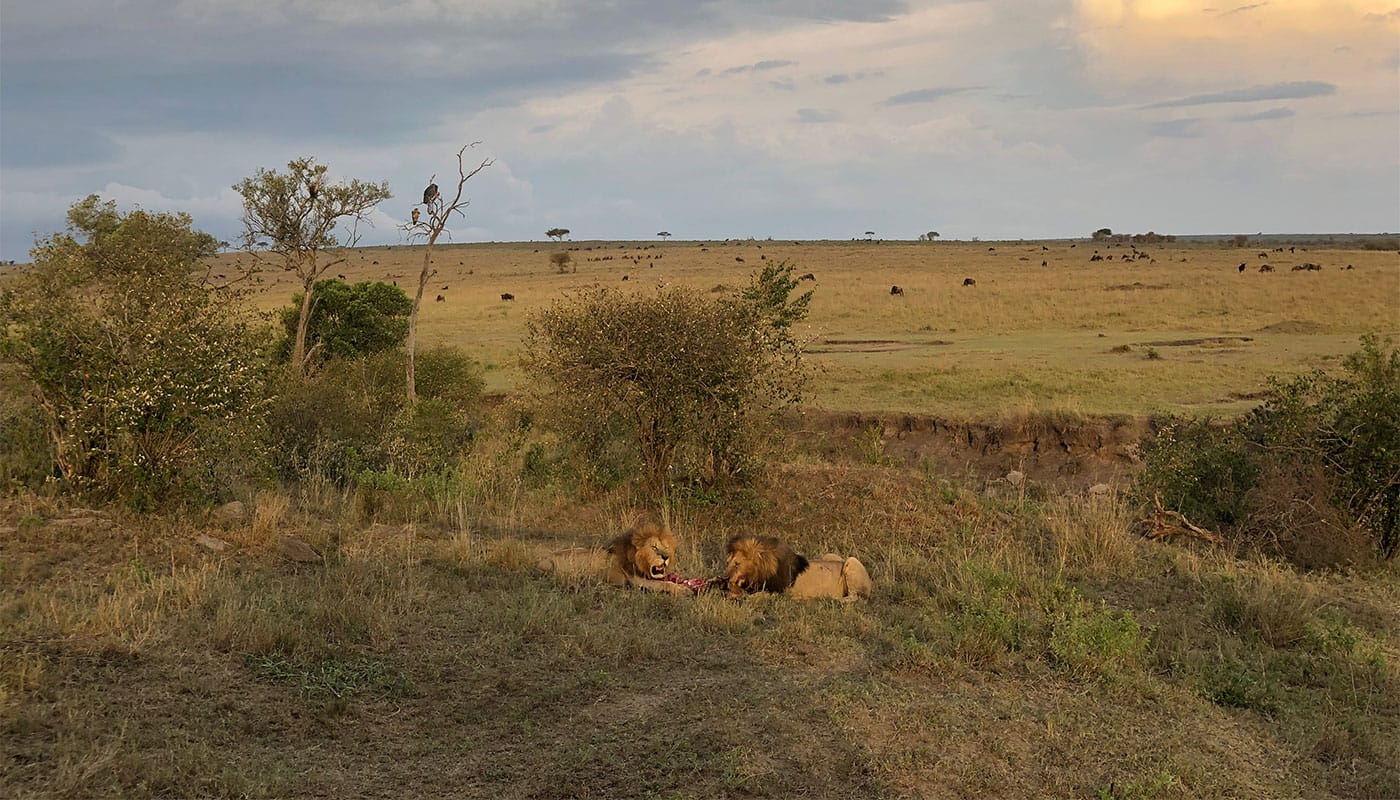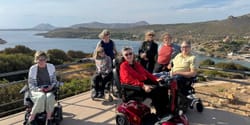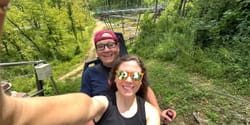After a fantastic time in Lake Nakuru National Park, my wheelchair accessible safari with GoAfrica Safaris continued with a trip to the larger Masai Mara National Reserve.
Masai Mara occupies 583 square miles of land, nearly 8 times larger than Lake Nakuru. Its rolling hills, grasslands, forests and riverfront provide beautiful settings to come face-to-face with a much more diverse community of wildlife. It is home to all of the “Big 5” — the black rhinoceros, buffalo, elephant, lion and leopard. I was fortunate to spot all five in the Masai Mara, but only got close enough to photograph the elephant, lion and leopard.
Recounting my safari was too much for one blog post, so I’ve broken it up into multiple articles. Here’s the table of contents and links to other articles in my Kenya Safari series:
Introduction: Planning A Wheelchair Accessible Kenya Safari
Tipping Etiquette: Guide to Tipping on an African Safari
Wheelchair Accessible Things to Do in Nairobi, Kenya
Wheelchair Accessible Places to Stay on a Kenya Safari
Exploring Kenya’s Lake Nakuru National Park in a Wheelchair
Spotting the Big 5 on an Accessible Tour of Kenya’s Masai Mara National Reserve
Lake Naivasha: The Perfect Pit-stop on a Kenya Safari
Masai Mara National Reserve Quick Facts
Here are some basic facts about Lake Nakuru National Park to get us started:
- Location — Rift Valley, Kenya
- Coordinates — 1°29′24″S 35°8′38″E
- Total Area — 583 mi2, 1,510 km2
- “Big 5” Representation — Buffalo, Elephant, Leopard, Lion, Rhinoceros (5/5)
- Species of Interest — Cheetah, Crocodile, Hippopotamus, Hyena, Masai Giraffe, Thompson’s Gazelle, Warthog, Wildebeest, Zebra
- Daily Admission Fee — $70 USD
Most Memorable Moment in Masai Mara
During my safari tour of the Masai Mara, I had many experiences that were truly exceptional. One moment truly stood out, which I captured in the video below:
As described by Expert Africa, the millions of wildebeest that make the Serengeti their home in Tanzania participate in a fairly predictable migration to the North in search of fresh land for grazing. This migration sends wildebeest across the Mara River and into Kenya’s Masai Mara National Reserve.
The video above shows a portion of this migration, with an endless column of wildebeest crossing the river, from Tanzania into Kenya. I watched this crossing for more than 30 minutes, and learned later that it had gone on for hours. It was a spectacle that I will not soon forget!
Game Drives in Masai Mara
My safari camp, Ashnil Mara, was located about one hour inside Masai Mara. On my first day inside the reserve and before we had even arrived at the camp, my driver-guide received a distress call via the radio. Another safari vehicle was stuck in the mud and needed assistance. My driver-guide asked if I was willing to divert, to which I said, “Yes, safari is all about the adventure!”
We arrived shortly thereafter to find a 4×4 Land Cruiser stuck in a mud pit. Several other safari groups had responded, and we watched as the driver-guides worked to free the vehicle. It was an interesting way to begin my Masai Mara safari, and the setting sun was a beautiful backdrop to the team effort captured in the video above.
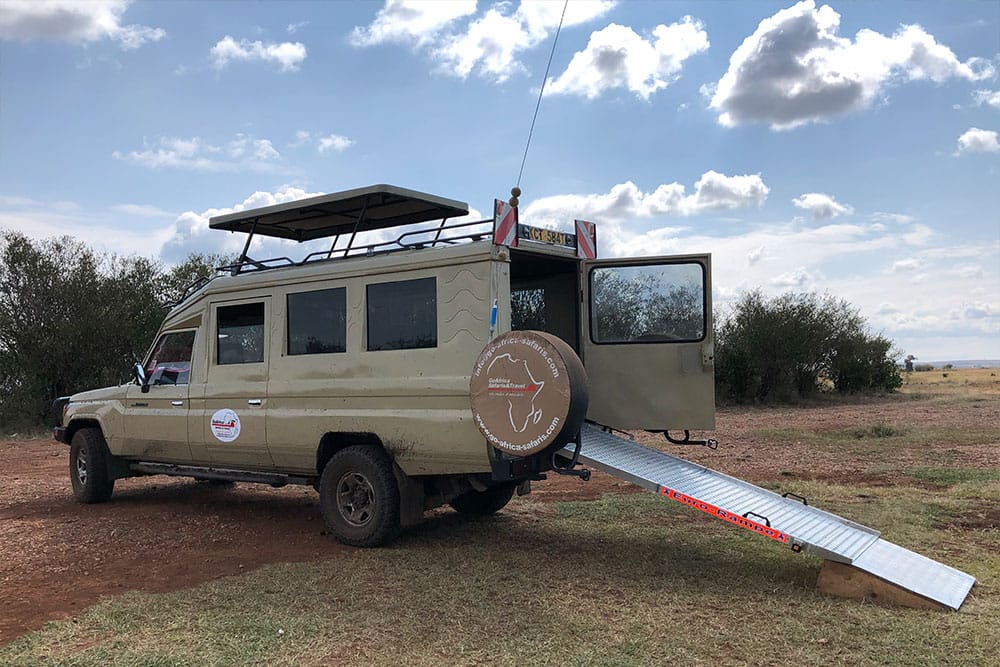
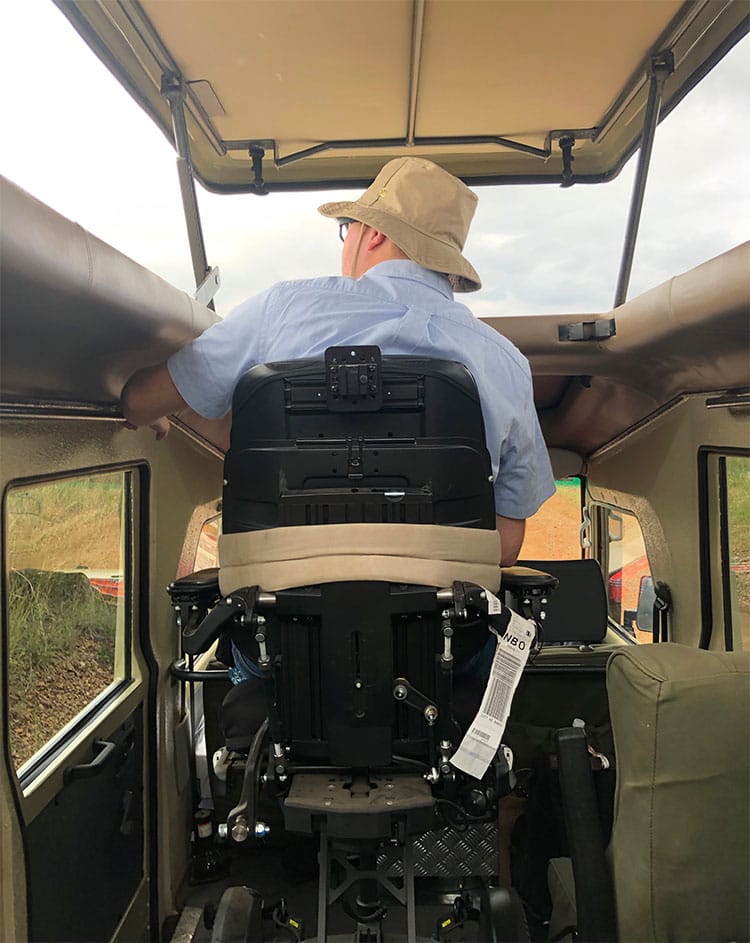
Speaking of a 4×4 Land Cruiser — that’s precisely the rig I was riding in, but mine was decked out with accessibility features, including a wheelchair ramp. Because I traveled with my power wheelchair, I was able to use its seat elevation feature to look out of the vehicle’s pop-up rooftop. My wheelchair was tightly secured to the floor for a safe and stable ride, even while elevated. That is how you get the full safari experience, even as a wheelchair user!
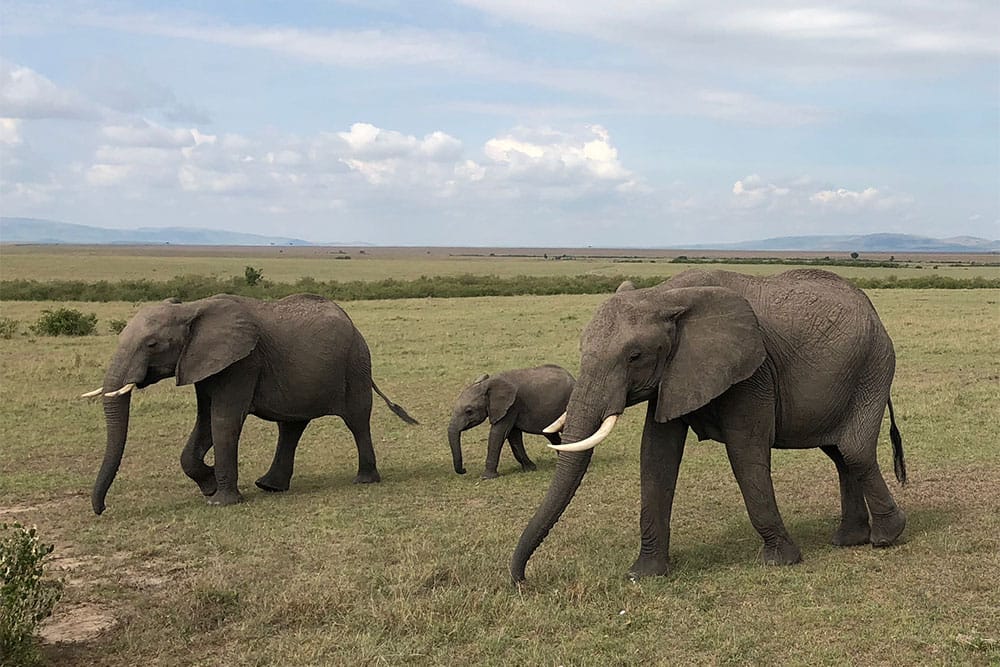
The first of the Big 5 animals that I saw was the elephant. They are truly magnificent creatures, with enormous size. My driver-guide made sure to keep our safari vehicle at a safe distance, but close enough to enjoy the view. The largest herd of elephants I encountered in the Masai Mara numbered about 20. Most groups were smaller, numbering 10 or less.
Having seen the buffalo, lion and rhinoceros at Lake Nakuru and with the elephant now off of my list, there was only one more animal to complete my Big 5 safari. Leopards are evasive, but I found them…
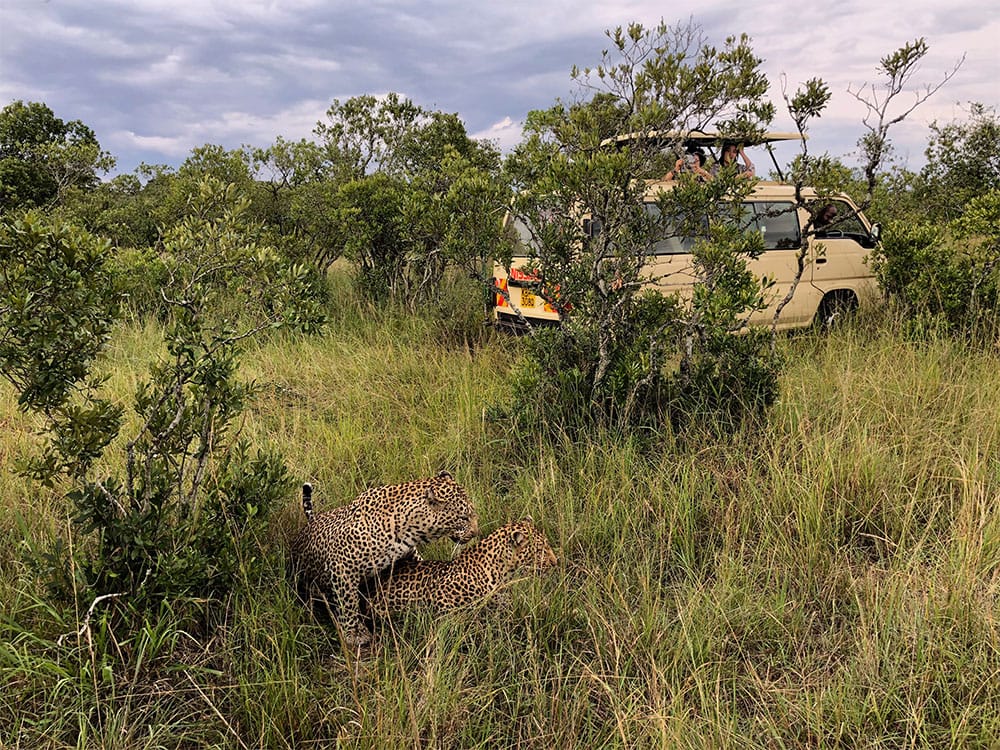
On my first full day of game drives in the Masai Mara, my driver-guide followed another vehicle into the bush after reports of a leopard sighting. What we rolled up upon was jaw-dropping. Two leopards, mating in the bush.
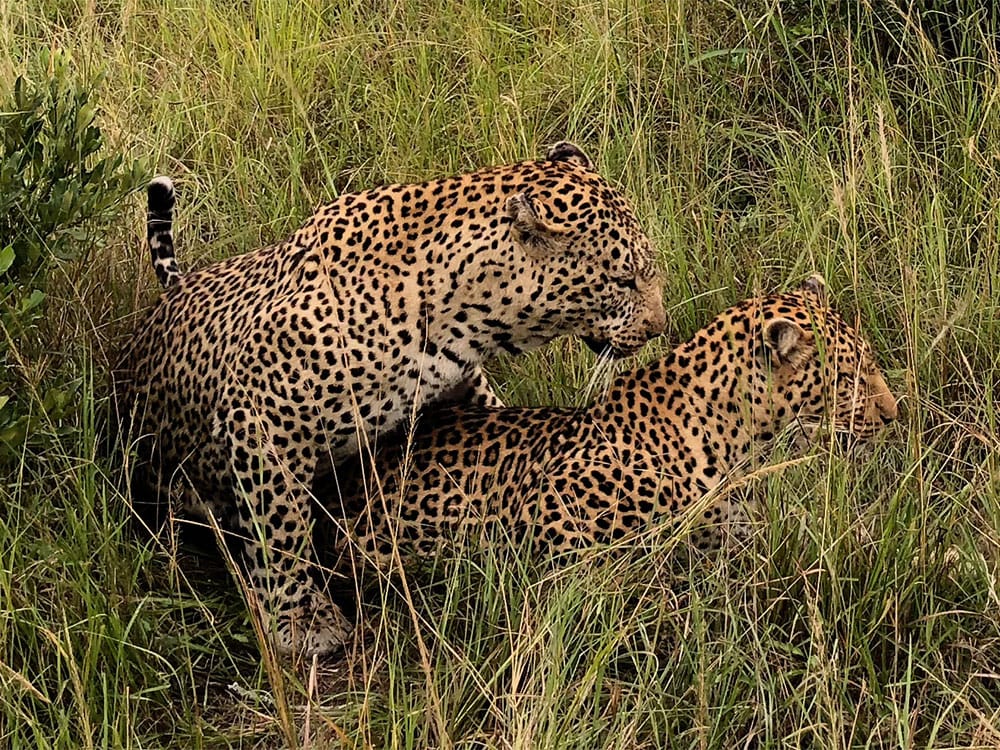
The close-up photo above reveals their beautiful coats, with the distinctive spots forming beautiful rosettes.
I know what you’re thinking — And the answer is yes, there is video. I debated whether or not to publish the footage, but this is a safari highlight, and it’s nature.
Seeing a single leopard while on safari is rare, and seeing two together is even more rare. But to encounter two leopards mating in the wild is almost unheard of, and I’m delighted to share it with you in the video above.
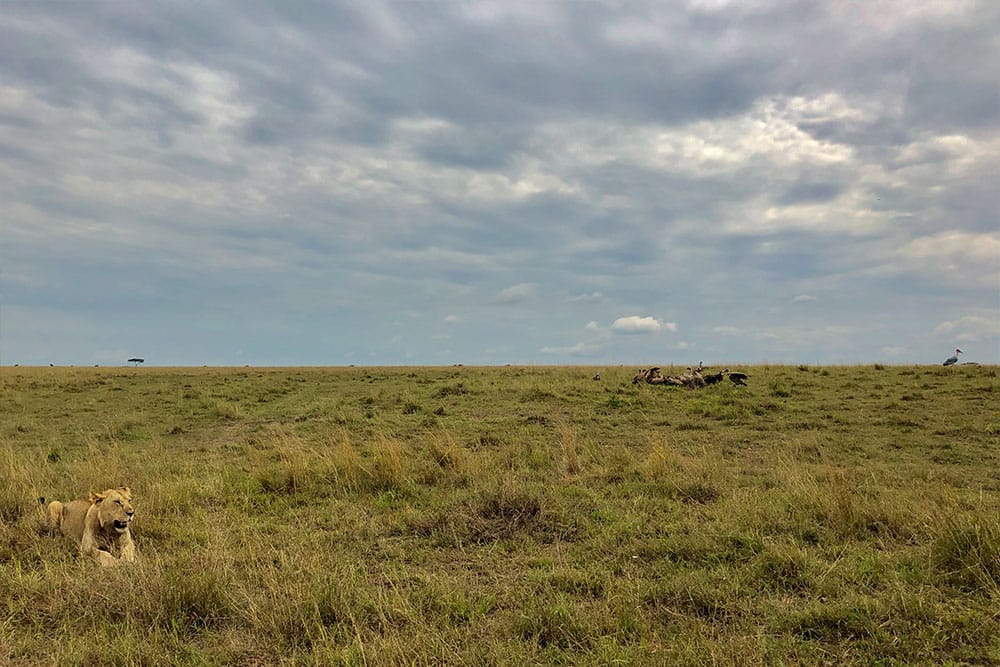
Beautiful as the leopard is, the lion is still my favorite of the big cats. And there is no shortage of lions in the Masai Mara. The lioness pictured above is relaxing following a meal, which the vultures had quickly come to finish off.
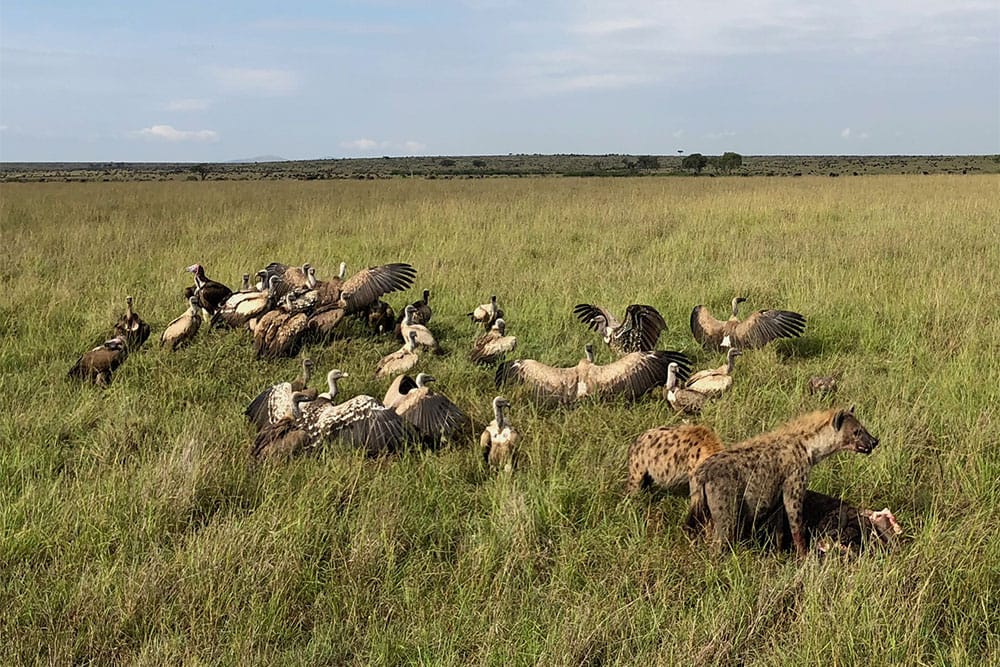
But in true National Geographic fashion, the hyenas sprinted in to claim their share of the leftovers. The lioness had had her fill, and continued to rest just yards away.
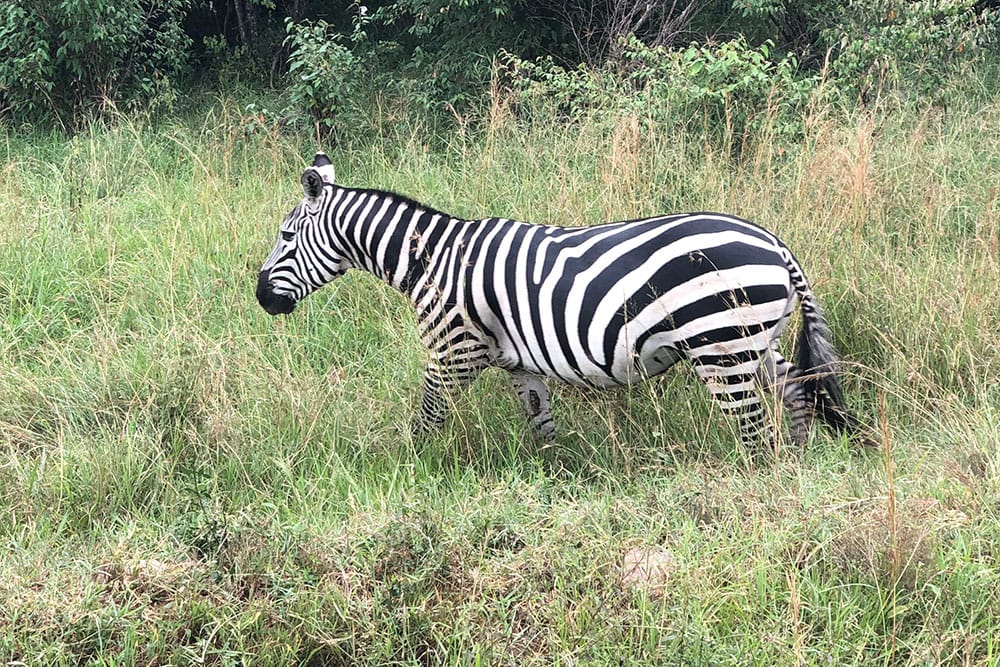
The Masai Mara is home to many zebras, and I felt that I should photograph one. So here it is, in all its striped glory.
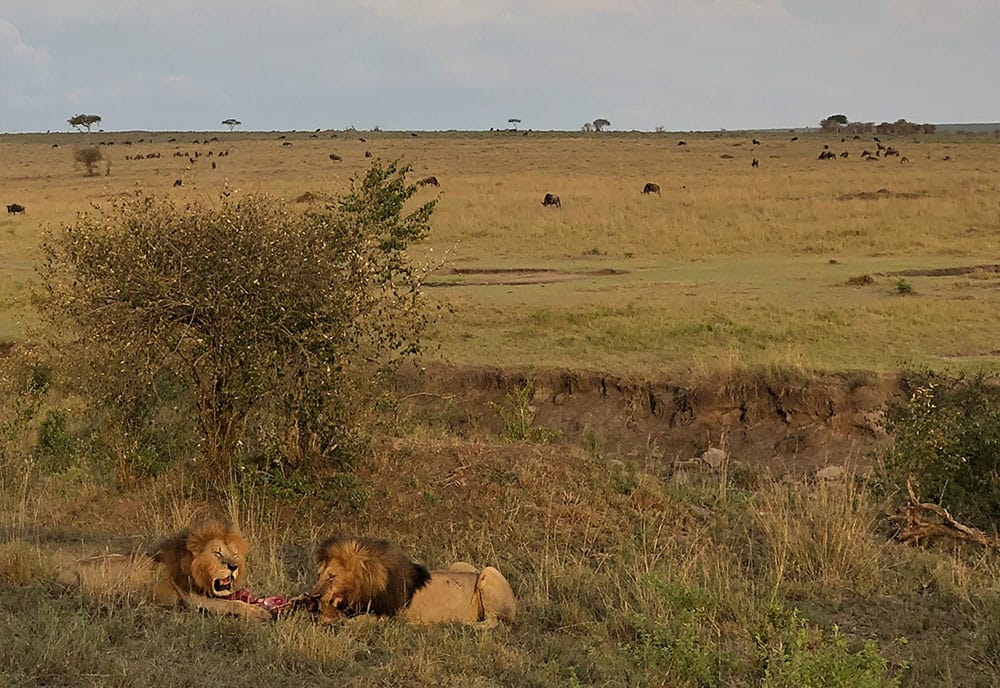
Although I never managed to see a lion hunt, I did get to see many lions shortly after their hunt. The two male lions pictured above were finishing off the last bits of a wildebeest.
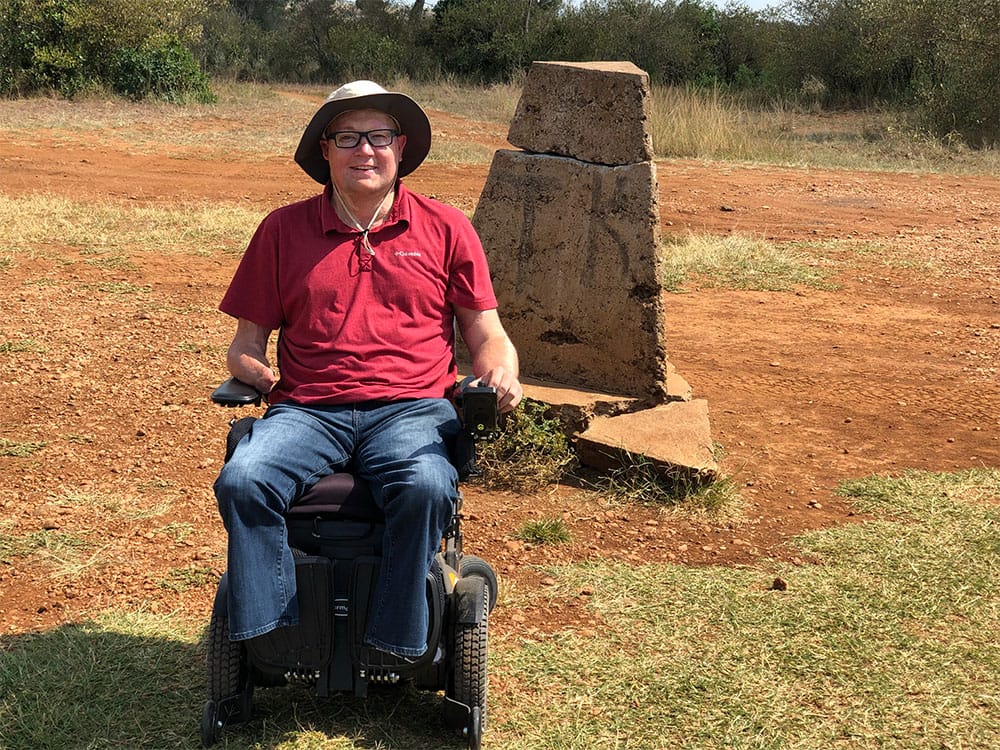
The Masai Mara National Reserve is located directly alongside the Tanzania border. I don’t count Tanzania in my list of countries visited, but I did roll my wheelchair from Kenya to Tanzania. The border is marked with the stones like the one pictured above, with a “T” for Tanzania scribbled on the left, and a “K” for Kenya on the right. I rolled across and came right back. 10 seconds max, so I hope that isn’t a crime.
Final Thoughts
The Masai Mara is a true treasure, and should be a part of every Kenya safari itinerary. It’s a bit more rugged than Lake Nakuru, with bumpier pathways and more off-roading required, but the experiences you’ll have there are second to none. You’ll have the opportunity to spot the Big 5, along with other amazing animals like the cheetah, giraffe, hippopotamus, hyena and warthog. After a trip to the Masai Mara, you are sure to return home with amazing memories of exploring the wild — memories that should last a lifetime.

